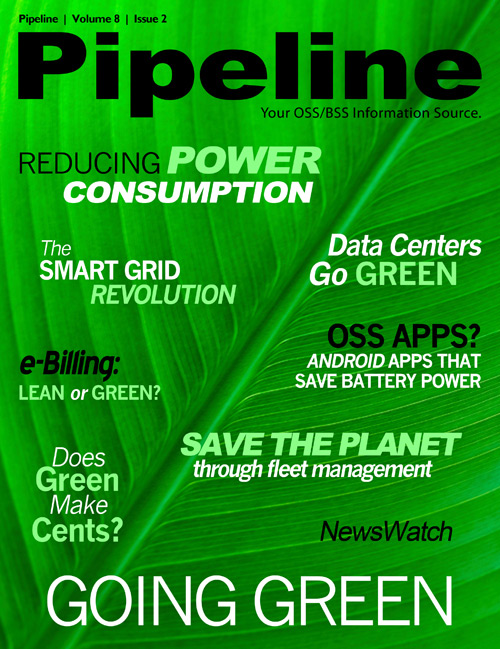Workforce and Fleet Management
At the time of the announcement, AT&T had only a handful of CNG vehicles. However, by summer
of 2010, that number had spiked to 1500 and continues to climb, passing 2,900 as of the writing of
this article. Furthermore, the carrier reports that in 2010 alone, it was able to avoid the purchase of 1
million gallons of fuel through its use of more efficient vehicles.
“In addition to our efforts in the alternative fuel vehicle space, we are also focused on evolving our fleet
as a whole towards more fuel efficient vehicles,” said Mari Melguizo, spokesperson for AT&T. “For
example, the Ford Transit Connect offers ample cargo capacity with a fuel economy over twice that of
gasoline-powered vans.”
Comcast, meanwhile, also sports a healthy percentage of alternative fuel capable vehicles in its fleet.
“We have 165 hybrid and over 2,400 flex fuel vehicles in our approximately 39,000 vehicle fleet,” said
the cable powerhouse in its annual corporate responsibility statement, “which means six percent of our
fleet is alternative fuel capable; the highest percentage in our industry.”
Companies like Deutsche Telekom and Verizon have invested in biodiesel vehicles to diversify their
energy sources and reduce overall emissions. Verizon hopes to debut more than 1,100 such vehicles
this year alone.
In addition, BT is helping itself along towards its goal of an 80% total reduction in carbon by 2020 by
introducing electric vehicles into its fleet of nearly 25,000 total autos.
But sometimes a brand new vehicle is neither feasible nor the quickest way to reduce cost. NTT, for
example, began retrofitting start-stop devices into non-hybrid vehicles within its massive fleet. Each
device cost about 70,000 Yen, which, at the moment, is equal to about $850 USD. That’s a modest
investment when you consider that field trials of vehicles equipped with these devices in Tokyo showed
a 10-25% reduction in fuel consumption.
The Value of a Little Planning
But let’s step back, for a moment, from the idea of making changes to the fleet, as it stands. Let’s say
you don’t have the cash on hand to make long-term investments in the vehicles themselves. That
doesn’t mean you can’t impact cost and carbon emissions. It isn’t always what you drive, after all.
Sometimes it’s how you drive it.
Fleet management firms like California-based Trimble specialize in taking a hard look at vehicle routing,
driving patterns, and other areas in which waste may emerge. A gateway installed in each vehicle
reports information about the vehicle’s position and movement to a central information repository,
which the client is able to view through a SaaS platform.
According to Joyce Tam, Director of Product Marketing for Trimble’s Fleet Solutions division, their
telematics systems can better understand a number of key indicators about the way their vehicles are being operated. GPS systems help in more efficient route planning, which is a tremendous fuel-saver as
well as a great way to reduce unnecessary man-hours. Trimble reports reductions as high as 20-30% in
fuel and time costs through more efficient routing.





